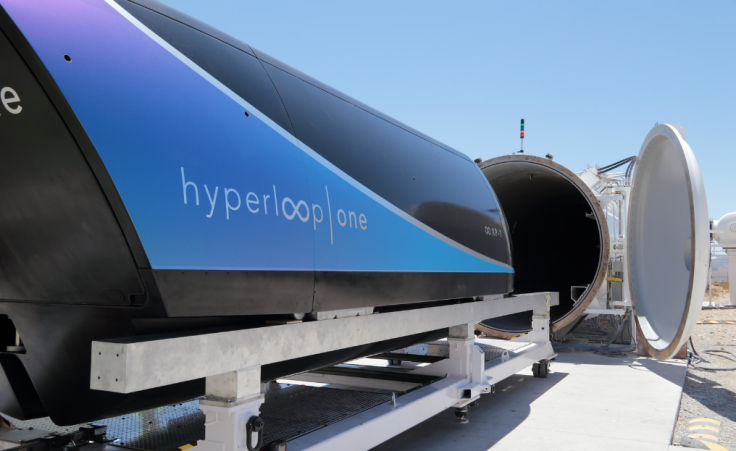Hyperloop One Tube Test: Passenger Pod Reaches Nearly 200 MPH

Hyperloop One announced Wednesday the second successful test of its passenger pod, which ran 192 miles per hour (310 kph). The test brings the company’s goal to transport people through a high-speed train traveling in a commercial tube closer to reality.
Hyperloop One completed Phase 2 of its project on July 29 in the DevLoop track site in Nevada, just 30 minutes away from Las Vegas. The company said the test run achieved “historic test speeds” traveling nearly the full distance of the 500-meter DevLoop track.
Read: Hyperloop Pod From India Does 750 Miles An Hour
The pod, called the Hyperloop One XP-1, accelerated for 300 meters and then glided over the track using magnetic levitation before coming to a slow stop. During the test, Hyperloop One depressurized the tube to the equivalent of air at 200,000 feet above sea level.
You can see a videos of Hyperloop One’s test run here:
"This is the beginning, and the dawn of a new era of transportation," Shervin Pishevar, Executive Chairman and co-founder of Hyperloop One, said in a statement. "We've reached historic speeds of 310 km an hour, and we're excited to finally show the world the XP-1 going into the Hyperloop One tube. When you hear the sound of the Hyperloop One, you hear the sound of the future."
Phase 2 comes after Hyperloop One announced last month its successful full system-test conducted on May 12. The company first revealed its 28-foot long pod prototype in July, which will carry passengers and cargo through the tube.
During Phase 1, the pod also coasted above the track using magnetic levitation for 5.3 seconds. The vehicle pulled 2 Gs while cruising 70mph, its target speed. Both Phase 1 and Phase 2 tested the electric motor, pod suspension, magnetic levitation, electromagnetic braking, vacuum pumping system and more.
Read: High-Speed Autonomous Trains Will Carry Passengers By 2023, Testing Will Start In 2019

Hyperloop One broke down the improvements from Phase 1 to Phase 2:
Phase 2 vs. Phase 1
Achieved 2.7x faster speed (192 mph vs. 69 mph)
Went 4.5x farther distance (1,433 feet vs. 315 feet)
10x longer propulsion segment (300m vs. 30m)
3.5x more power to the pod (3,151hp vs. 891hp)
Hyperloop One Pod and Tube
Last month, Hyperloop One said it will continue to test its vehicle, which uses electromagnetic propulsion and magnetic levitation, in the coming months. The test tube weighs more than one million kilograms, is 500 meters long and has a diameter of 3.3 meters.
The DevLoop is in preparation for the installation of the commercial tube that will connect Dubai and Abu Dhabi, about a 100 mile stretch, in less than 15 minutes. Traveling with the tube between major cities in the Gulf region could take less than an hour when using the Hyperloop system.
"Hyperloop One will move people and things faster than at any other time in the world," said Pishevar in July. "With Hyperloop One, the world will be cleaner, safer and faster. It's going to make the world a lot more efficient and will impact the ways our cities work, where we live and where we work. We'll be able to move between cities as if cities themselves are metro stops."
Hyperloop One plans to transport cargo with its technology by 2020 and passengers by 2021, its site says. The company’s CEO, Rob Lloyd, said Wednesday Hyperloop One has already proven their technology works and is ready to begin discussions with partners, customers and governments worldwide over the commercialization of the tube and pod.
The hyperloop concept was first introduced by Tesla and SpaceX CEO Elon Musk, who went on to launch the Boring Company. The project aims to create a vast network of tunnels for car transportation. However, Musk tweeted last month he has received “verbal govt approval for The Boring Company” to build an underground hyperloop connecting the four cities in the East coast. The CEO said travel time from New York to D.C. would take 29 minutes.
© Copyright IBTimes 2024. All rights reserved.





















